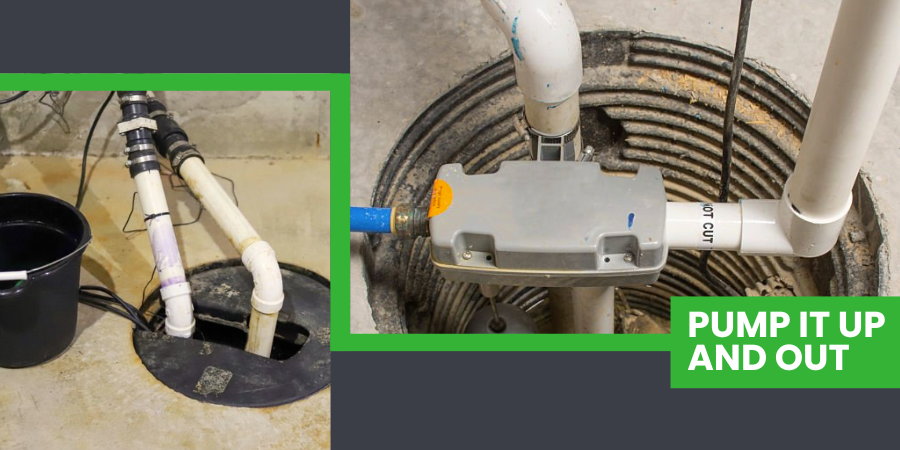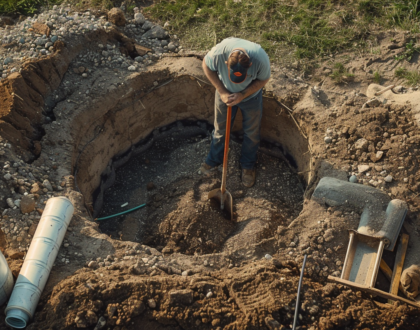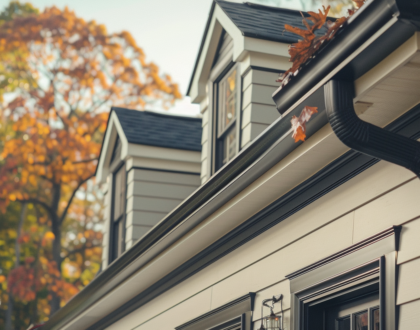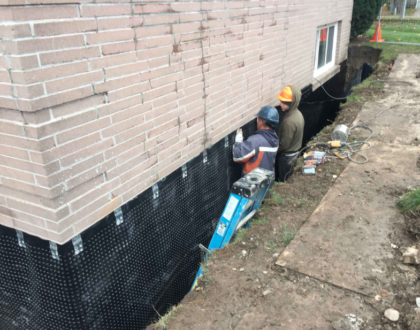Ultimate sump pump guide: Keeping your home dry and healthy

Discover the essential sump pump guide. Learn how to keep your living spaces dry and healthy with tips on selection, installation, and maintenance.
In regions like the Triangle, where basements and crawlspaces frequently face water issues, a sump pump becomes essential for a dry and healthy living space.
This guide dives into all you need to know about sump pumps, covering basics, types, installation, and maintenance tips. These devices are key in protecting your home from water damage, mold, and foundation issues.
What exactly is a sump pump?
A sump pump is a water management device installed in the lowest part of a basement or crawlspace. Its job is to keep the area dry and flood-free, directing water away from your home.
In areas prone to flooding, like the Triangle, sump pumps are not just helpful; they’re necessary. They guard against water damage, mold growth, and foundation issues.
Benefits and functions of a sump pump:
- Water Management: By collecting and diverting water away from your home’s foundation, sump pumps manage excess water and prevent the standing water and flooding.
- Safety Considerations: Sump pumps can reduce the risk of electrocution by keeping basements and crawlspaces dry. It’s an important perk given those areas usually contain electrical systems.
- Mold and Mildew Prevention: Dry conditions prevent mold and mildew and that’s what sump pumps do. They help maintain the structural integrity of your home and keep it healthy for the people living in it.
- Foundation Protection: Consistent or excessive moisture can weaken a home’s foundation over time. A sump pump helps protect the foundation by making sure water doesn’t accumulate against or beneath the foundation that causes cracks and structural damage.
Do you need a sump pump?
Here’s how to decide if a sump pump is right for your home:
- Inspect for water damage
Water damage in your basement or crawlspace is a telltale sign of moisture problems. After it rains you can inspect these areas for puddles, damp walls, or water stains. Moisture can also appear as efflorescence, a white powdery substance left on concrete surfaces after the water evaporates.
- Evaluate the property slope
The landscape around your home plays a role in water management. Ideally, the ground should slope away from your home’s foundation to direct rainwater and melting snow away to prevent water pooling. If the slope directs water toward your home, it can pool around the foundation letting water seep into your basement or crawlspace. - Check the water table:
If you live in an area with a high water table, your basement or crawlspace is more prone to flooding. A high water table means the ground water is close to the surface, which can press against your basement or crawlspace and leads to moisture issues or flooding. - Consider local flooding history:
If you live in an area with a history of flooding, there’s a chance you need a sump pump. It might help to get historical flood data from local government offices or neighborhood associations. Assess the risk level and take precautions to protect your home.
If any of these indicators are a concern, investing in a sump pump system can be a wise decision to protect your home. Moreover, the costs of a sump pump system are usually less expensive when compared to the costs of repairing water damage. Plus they give you peace of mind knowing your home is protected.
For crawlspaces, here’s what to do:
- Monitor humidity levels:
High humidity in a crawl space can indicate moisture issues that a sump pump could help resolve.
- Look for standing water:
After heavy rain, check your crawl space for any standing water or soggy ground, which suggests poor drainage. - Evaluate external drainage:
Make sure gutters and downspouts direct water away from your foundation to reduce the risk of water entering your crawl space. - Consider encapsulation:
If you’re thinking about encapsulating your crawl space for moisture control, a sump pump might be necessary to handle any water that collects beneath the vapor barrier.
Other steps to minimize standing water
To minimize standing water in your crawlspace or basement, here are things you can do:
- Improve exterior drainage:
Ensure gutters and downspouts are clean and extend far enough away from the foundation. - Grade the landscape:
Slope the ground away from your home to encourage water to flow away from the foundation. - Install a French Drain:
If water accumulation is a consistent problem, consider installing a French drain around the perimeter of your home. - Use a dehumidifier:
For crawlspaces, a dehumidifier can help remove excess moisture from the air. - Regular inspections:
Periodically check for leaks in plumbing and the foundation to address them promptly.
Selecting the right sump pump
Not all sump pumps are created equal and that’s why we’ve listed a few things to consider when choosing a sump pump:
- Capacity:
The pump should be able to handle the highest level of water influx you expect. - Material durability:
Cast iron and stainless steel offer longevity and reliability. - Operational noise:
For basements used as living spaces, quieter submersible pumps might be preferred. - Warranty and support:
Look for products with good warranties and reliable customer support.
Installation essentials
Proper installation of a sump pump involves correct sizing of the pump and pit. Make sure the discharge locations are appropriate to direct water away from the foundation and install a check valve to prevent discharged water from flowing back into the pit.
Maintenance tips
Perform routine checks and maintenance on your sump pump to extend its life.
- Regular testing:
Run your sump pump every few months by pouring water into the pit until the pump activates. - Clean the grate:
The sump pit’s grate should be cleaned of debris regularly. - Battery inspection:
If you have a model with a battery backup, check and replace the batteries as recommended by the manufacturer.
Troubleshooting sump pumps
Experiencing continuous operation or hearing unusual noises from your sump pump can signal potential problems. These symptoms may point to mechanical issues, blockages, or even a mismatch in pump size for your needs.
Continuous Operation: If your sump pump runs non-stop, this often suggests a stuck switch or that the pump’s capacity is too small for the volume of water it needs to handle. It’s crucial to investigate the cause, as continuous running can lead to premature wear and tear.
Unusual Noises: Sounds such as grinding or rattling can indicate mechanical problems or obstructions within the pump. If you hear such sounds, address them promptly to prevent further damage to your pump, safeguard your sump pump’s functionality, and extend its lifespan.
When to upgrade a sump pump
Consider upgrading your sump pump if it’s more than 7-10 years old, as newer models are more efficient and reliable. Additionally, changes in weather patterns or further development of your basement/crawlspace might necessitate a different system.
And that’s a wrap for sump pumps
Investing in the right sump pump system is an important decision for any homeowner looking to protect their property from water damage and maintain a healthy living environment.
By being informed you can choose a solution wisely. And with proper installation and performing regular maintenance, you can keep your basement dry and your home safe for years to come.
Need help with a sump pump?
Visit our contact page or you can schedule a free virtual consultation to get personalized advice on sump pumps for your home.
Recommended Posts

The ultimate guide to dry wells: Protecting your home and garden
February 14, 2024

How to keep your home safer and more dry.
February 13, 2024

Basement waterproofing is risky business for do-it-your-selfers
December 11, 2023
